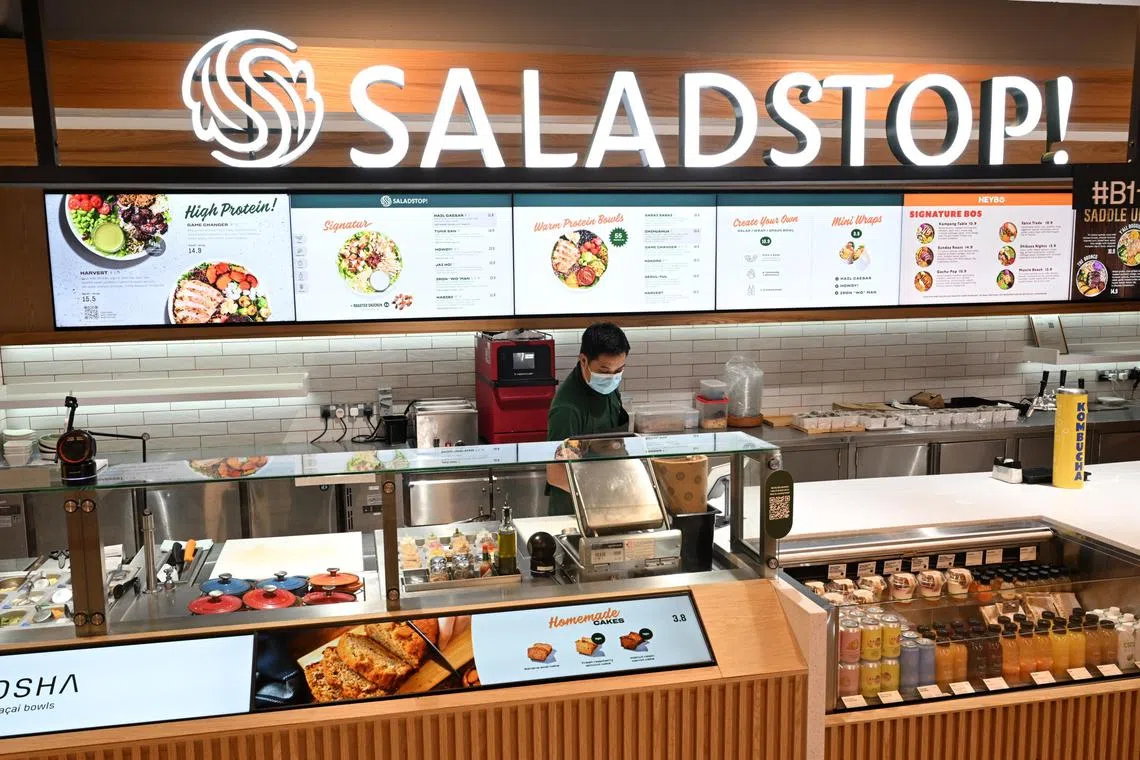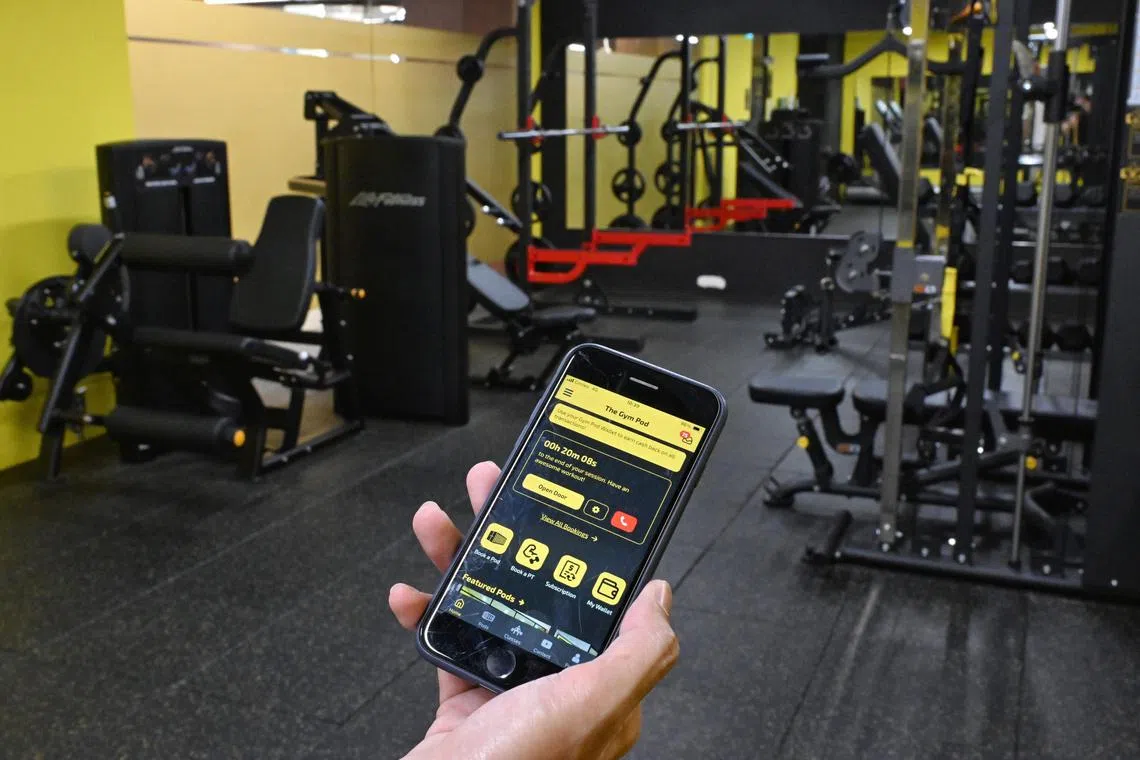New wellness-themed retail hub launched at Dhoby Ghaut MRT station
Sign up now: Get ST's newsletters delivered to your inbox
Follow topic:
SINGAPORE –Commuters travelling to Dhoby Ghaut can now hit the gym, see a doctor and grab a salad, all without leaving the MRT station.
Just above the North-South Line platform of Dhoby Ghaut station is a collection of shops and businesses – including clinic Alliance Medical, gym operator The Gym Pod, and food and beverage chain SaladStop! – that cater to the health and wellness needs of commuters.
It also includes a co-working and event space large enough to hold corporate town halls and weekend flea markets.
Called Staytion Lifestyle Centre, the shops and services are part of a new themed retail concept launched on July 29 by Stellar Lifestyle, the retail arm of transport operator SMRT.
Experts say it is part of efforts by SMRT to provide more targeted retail offerings at its train stations, as it deals with stiff competition from online retailers and shopping malls.
In recent years, Stellar Lifestyle has diversified the retail offerings and services at MRT stations. In 2022, it launched co-working spaces
In 2023, it launched its first themed retail hubs, including the retail innovation space Hive 2.0
Stellar Lifestyle president Tony Heng said at the launch of the new centre at Dhoby Ghaut station that there are plans to roll out other themed retail concepts to two stations in the Central Business District (CBD).
This will be done over the next two to five years, he said.
Mr Heng said the new retail concept at Staytion Lifestyle Centre was launched after the firm received positive feedback from commuters and tenants at Hive 2.0 and Timezone Orchard Xchange.
Staytion’s chief executive Jane Toh told The Straits Times that the centre draws close to 9,000 customers daily, with many seeing a doctor or going for a workout session.
On the weekends, it gets up to 20,000 people when there is a flea market.
The centre opened in October 2023, with various businesses gradually setting up shop over the past months.
Ms Toh said Staytion’s various co-working spaces at MRT stations have shown promise and contributed to the company’s decision to expand.
Shop tenants told ST that business at the centre has been decent.
Mr Adrien Desbaillets, chief executive of SaladStop! Group, said the store at the Staytion Lifestyle Centre attracts good breakfast crowds and weekend traffic. But its outlets in the CBD rely mostly on weekday lunchtime crowds.

The SaladStop! store at Staytion Lifestyle Centre draws good breakfast crowds and weekend traffic.
ST PHOTO: CHONG JUN LIANG
At The Gym Pod, fitness buffs can book either a small “pod” for a private workout or a bigger one that can fit up to eight people.
The Gym Pod’s founder Damian Chow said its bigger pod is booked and used by at least four people at a time for around six to seven hours each day.
Its private pods are booked for around eight to 10 hours daily, which Mr Chow called a “good utilisation rate” given that its outlet is open only during the operating hours of the MRT station.
Its 24/7 gyms have an average utilisation rate of 10 to 14 hours a day.

At The Gym Pod, fitness buffs can book either a small “pod” for a private workout or a bigger one that can fit up to eight people.
ST PHOTO: CHONG JUN LIANG
Retail experts agree that themed retail concepts are good for driving traffic to shops.
Associate Professor Lau Kong Cheen, head of the marketing programme at Singapore University of Social Sciences’ School of Business, said the themed retail approach makes sense at large stations such as Dhoby Ghaut, which is a triple-line interchange.
This is because it allows commuters to enjoy the convenience of accessing these retail offerings without having to exit the station, he added.
As for dealing with competition from shopping malls, he said SMRT would need to develop retail concepts that are distinct or unique to complement the malls instead of competing with them.
Dr Seshan Ramaswami, associate professor of marketing education at Singapore Management University, said many MRT stations already have convenience stores, grab-and-go food outlets and quick-service hair salons, and expanding to a health and wellness space was a “natural extension”.
“Curating a theme specific to localities can bring coherence to SMRT’s retail leasing strategy... The success of these spaces will, of course, depend on execution and the ability to keep up with consumer trends as well as the response of the competition to these new concepts,” he added.

